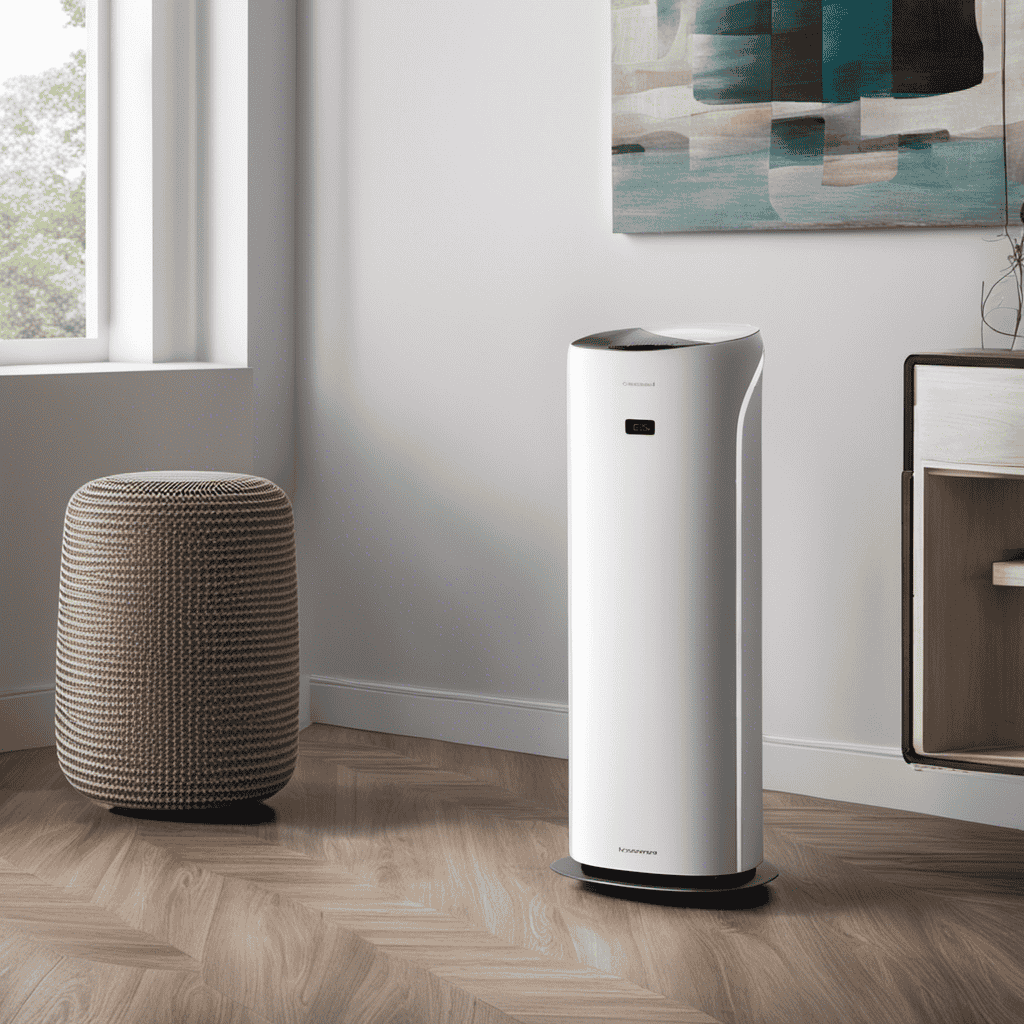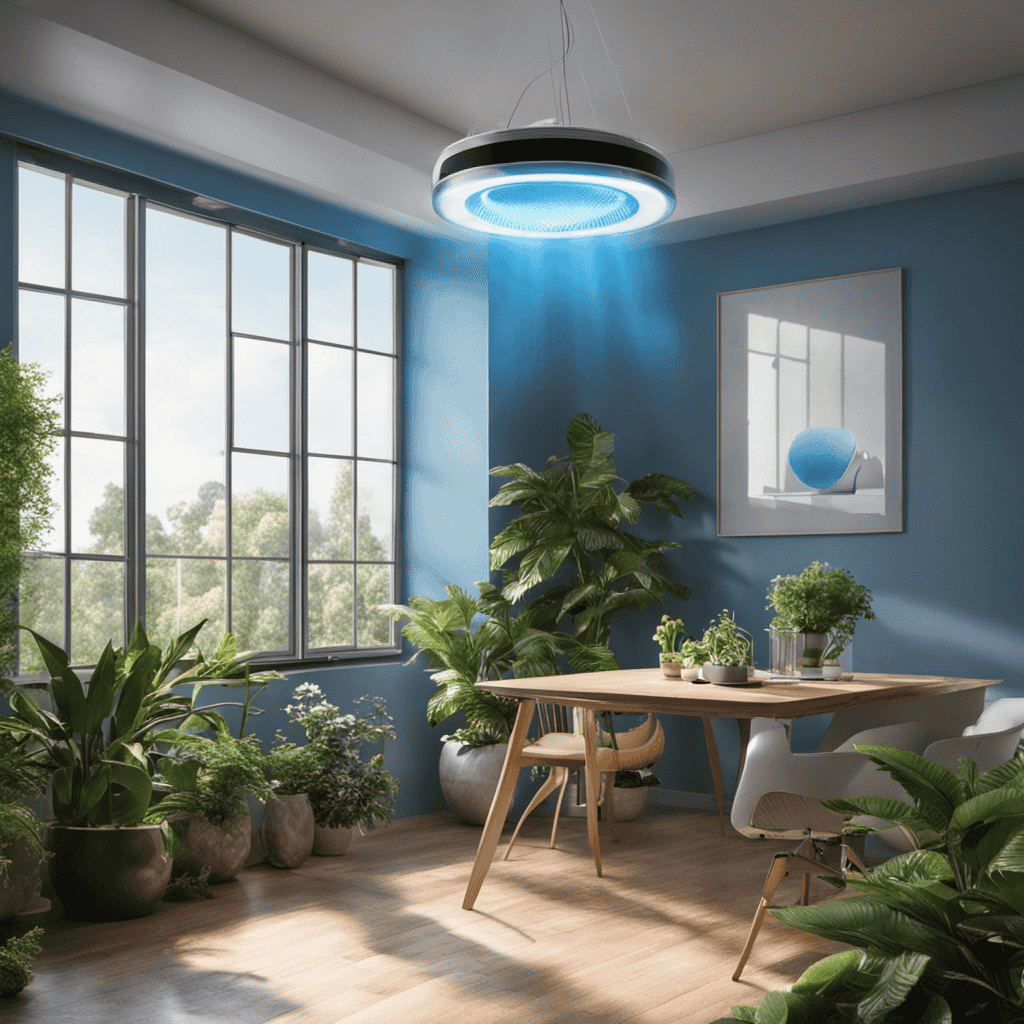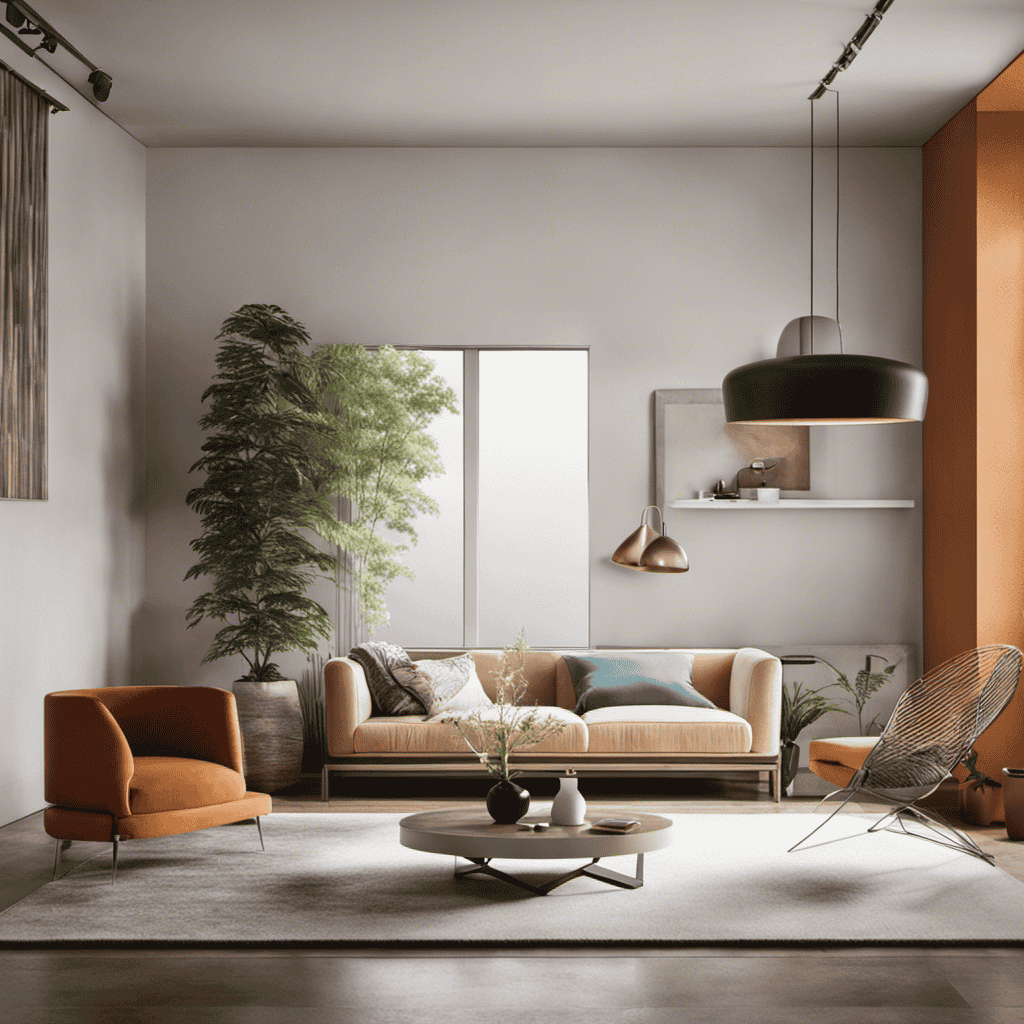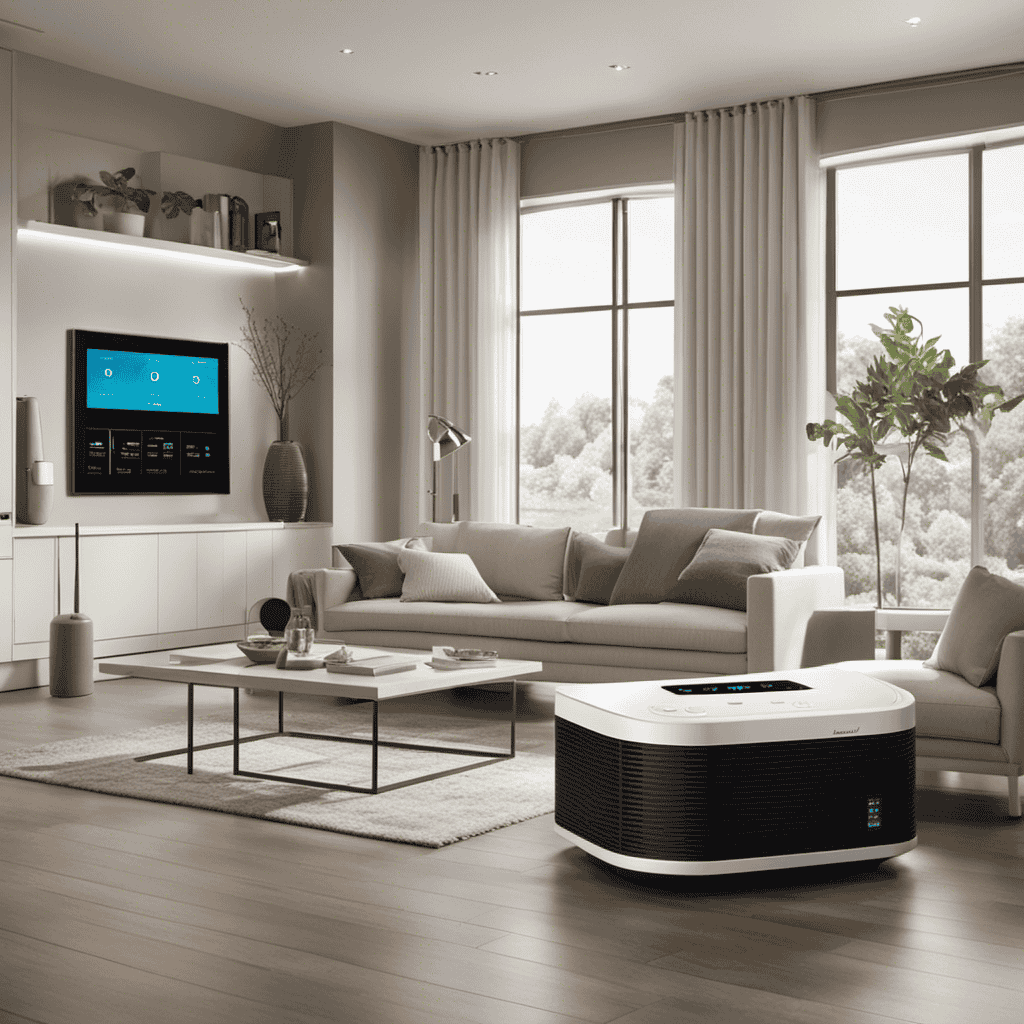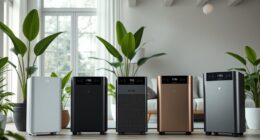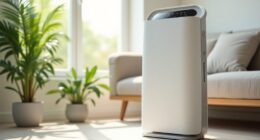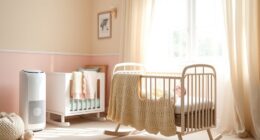As a person who prioritizes clean and comfortable air in my home, I have frequently pondered the distinction between an air purifier and a dehumidifier. Through thorough research, I can attest that these two devices have specific functions.
In this article, we will delve into the functionality of both devices, exploring their benefits and advantages. By the end, you’ll have a clear understanding of which one is best suited for your needs.
So, let’s dive in and unravel the mysteries of air purifiers and dehumidifiers.
Key Takeaways
- Air purifiers remove harmful particles and pollutants from the air, improving respiratory health and preventing respiratory ailments.
- Dehumidifiers remove excess moisture from the air, reducing humidity levels and preventing mold and mildew growth.
- Both air purifiers and dehumidifiers improve indoor air quality and create a healthier and more comfortable environment.
- Factors to consider when choosing between an air purifier and dehumidifier include assessing air quality, determining the specific need, and evaluating the size and noise levels of the devices.
The Purpose of an Air Purifier
If you suffer from allergies or asthma, an air purifier can help improve the quality of the air you breathe. Air purifiers are designed to remove harmful particles and pollutants from the air, such as dust, pollen, pet dander, and mold spores. By doing so, they provide numerous benefits to your health and well-being.
Clean air is essential for maintaining good respiratory health and preventing respiratory ailments. Breathing in polluted air can exacerbate allergies and asthma symptoms, leading to discomfort and potential health complications.
Air purifiers work by filtering the air and trapping these particles, ensuring that the air you breathe is clean and free from allergens and irritants.
Understanding the role of a dehumidifier is also important in creating a healthy indoor environment.
Understanding the Role of a Dehumidifier
Understanding the role of a dehumidifier can help improve indoor air quality and prevent the growth of mold and mildew. A dehumidifier works by removing excess moisture from the air, reducing the humidity levels in a room or space. This is important because high humidity can create a breeding ground for mold, mildew, and dust mites, which can trigger allergies and respiratory issues. By controlling the moisture levels, a dehumidifier helps to create a healthier and more comfortable environment.
Additionally, dehumidification can also help to reduce musty odors, protect furniture and electronics from moisture damage, and even lower energy costs by making the air conditioning more efficient. Understanding these benefits highlights the importance of using a dehumidifier in maintaining a clean and healthy indoor environment.
Moving on to the key differences in functionality between dehumidifiers and air purifiers…
Key Differences in Functionality
When it comes to air purification methods, there are various techniques that can effectively improve the quality of the air we breathe. These methods range from mechanical filtration to chemical processes that eliminate pollutants and allergens.
Additionally, moisture control capabilities play a crucial role in maintaining healthy indoor environments by preventing the growth of mold and mildew.
Air Purification Methods
To effectively purify the air in your home, consider using an air purifier that utilizes HEPA filters.
Air purifiers are designed to remove various types of air pollutants, including dust, pollen, pet dander, mold spores, and smoke particles. HEPA filters are highly efficient at capturing these pollutants, as they can trap particles as small as 0.3 microns in size.
This air purifier technology works by forcing air through the filters, which consist of multiple layers of fine fibers. As the air passes through, the pollutants get trapped, allowing only clean air to be released back into the room.
This method of air purification is backed by scientific research and is recommended for individuals with respiratory conditions or allergies.
Moisture Control Capabilities
For optimal moisture control in your home, consider using an air purifier with built-in dehumidifying capabilities.
Humidity control is essential to prevent the growth of mold and mildew, which can cause allergies and respiratory issues.
A high level of moisture in the air can also damage furniture, walls, and other household items.
An air purifier with dehumidifying capabilities can effectively remove excess moisture from the air, creating a more comfortable and healthy living environment.
These devices typically use a combination of filters and desiccants to extract moisture, trapping it before releasing dry air back into the room.
Benefits of Using an Air Purifier
Using an air purifier can help improve indoor air quality and reduce allergy symptoms. Here are some benefits of clean air and the impact it has on respiratory health:
-
Removes allergens: Air purifiers effectively filter out common allergens such as pollen, pet dander, and dust mites, reducing the triggers for allergy symptoms.
-
Reduces respiratory illnesses: Clean air can minimize the risk of respiratory infections and diseases by eliminating airborne bacteria and viruses.
-
Eliminates pollutants: Air purifiers can remove harmful pollutants like volatile organic compounds (VOCs), smoke particles, and chemical fumes, creating a healthier environment.
Maintaining clean air is crucial for our overall well-being, especially for those with respiratory conditions like asthma or allergies. By investing in an air purifier, we can breathe easier, experience fewer allergy symptoms, and improve our respiratory health.
Advantages of Having a Dehumidifier
Having a dehumidifier in your home offers a number of advantages. Firstly, it helps to reduce the growth of mold and mildew by regulating the humidity levels in the air. This is particularly important in areas with high humidity, as mold and mildew can not only cause damage to your home but also have negative effects on your health.
Additionally, a dehumidifier can improve indoor air quality by removing excess moisture and reducing the presence of allergens such as dust mites and pet dander.
Reduces Mold and Mildew
To reduce mold and mildew, you’ll want to consider an air purifier or dehumidifier. These devices play a crucial role in maintaining indoor air quality and preventing respiratory issues.
Here are some key benefits of using an air purifier or dehumidifier:
-
Reduces allergens: Both air purifiers and dehumidifiers help in reducing allergens such as dust mites, pet dander, and pollen. This is especially beneficial for individuals with allergies as it can alleviate symptoms and improve overall comfort.
-
Controls humidity levels: High humidity creates a breeding ground for mold and mildew. A dehumidifier helps in removing excess moisture from the air, preventing the growth of these harmful substances.
-
Improves respiratory health: By reducing the presence of mold and other allergens in the air, air purifiers and dehumidifiers can help prevent respiratory issues such as asthma attacks and allergic reactions.
Improves Indoor Air Quality
If you’re concerned about the quality of the air inside your home, it’s important to take steps to improve it. Indoor air pollution can have negative effects on our health, so finding ways to reduce it is crucial. One effective way to improve indoor air quality is by using an air purifier. These devices help remove pollutants such as dust, pet dander, and allergens from the air, leading to cleaner and healthier air to breathe. In addition to reducing indoor air pollution, air purifiers also offer several health benefits. They can help alleviate allergy and asthma symptoms, reduce the risk of respiratory infections, and improve sleep quality. Investing in an air purifier is a simple yet effective way to create a healthier environment for you and your family.
| Air Purifier | Dehumidifier |
|---|---|
| Removes pollutants from the air | Reduces moisture in the air |
| Reduces allergy and asthma symptoms | Helps prevent mold growth |
| Improves sleep quality | Reduces musty odors |
Choosing the Right Device for Your Needs
When it comes to choosing the right device for your needs, you’ll want to consider factors such as the air quality in your home and your specific concerns. Here are some factors to consider when selecting a device:
-
Air Quality: Assess the air quality in your home to determine if you need an air purifier or a dehumidifier. If you have issues with allergens, dust, or pet dander, an air purifier might be more suitable. On the other hand, if you have high humidity levels and want to reduce moisture in the air, a dehumidifier is the way to go.
-
Size of the Space: Consider the size of the area you want to treat. Air purifiers and dehumidifiers come in different sizes and have varying coverage capacities. Make sure to choose a device that can effectively clean or dehumidify the specific space you are targeting.
-
Noise Level: Determine how important noise level is to you. Some air purifiers and dehumidifiers can be noisy, especially if you plan on using them in areas like bedrooms or offices where quietness is desired.
When selecting the right device, it’s important to consider these factors and choose the one that aligns with your specific needs and concerns.
Now, let’s explore how to maximize the efficiency of both appliances.
How to Maximize the Efficiency of Both Appliances
Here are some tips on maximizing the efficiency of both appliances.
To maximize energy efficiency, make sure to clean and replace air filters regularly. Clogged filters restrict airflow, forcing the appliances to work harder and consume more energy.
Additionally, keep the appliances in well-ventilated areas away from obstructions. Proper airflow allows them to operate efficiently.
Regular maintenance is crucial for both appliances. For air purifiers, clean the exterior and interior components as directed by the manufacturer. For dehumidifiers, empty the water tank regularly and clean the coils to ensure optimal performance.
Lastly, consider using a timer or smart features to control when the appliances operate.
Frequently Asked Questions
Can an Air Purifier Remove Humidity From the Air?
Yes, an air purifier can remove some humidity from the air, but it is not as effective as a dehumidifier. Air purifiers primarily focus on removing airborne particles and improving air quality.
Can a Dehumidifier Remove Pollutants and Allergens From the Air?
A dehumidifier can help remove excess moisture from the air, which can reduce the growth of mold and mildew. However, it is important to note that a dehumidifier does not have the same air purifying features as an air purifier.
What Are Some Common Health Problems That Can Be Alleviated by Using an Air Purifier?
Using an air purifier can alleviate common health problems like allergies. It helps remove pollutants and allergens from the air, providing cleaner and healthier indoor air. When choosing one, consider your specific needs and the purifier’s filtration capabilities.
How Does the Size of a Room Affect the Performance of an Air Purifier or Dehumidifier?
I’m not sure about the difference between an air purifier and a dehumidifier, but when it comes to room size, it can affect the performance of both. An air purifier may not remove humidity from the air.
Are There Any Specific Maintenance Requirements for Air Purifiers and Dehumidifiers That Need to Be Followed Regularly?
Regular maintenance for air purifiers and dehumidifiers is crucial to ensure their optimal performance. It’s important to follow manufacturer instructions for cleaning filters, emptying water tanks, and replacing parts. Room size can impact their effectiveness, so choose the right size for your space.
Conclusion
In conclusion, both air purifiers and dehumidifiers play vital roles in improving indoor air quality. The air purifier helps remove pollutants and allergens, while the dehumidifier reduces moisture levels to prevent mold and mildew growth. By combining the strengths of both devices, you can create a healthier and more comfortable environment for yourself and your loved ones.
Remember, just like Batman and Robin, these appliances work best when they team up to fight against the invisible villains lurking in the air. So, go ahead and equip your space with this dynamic duo for a breath of fresh air.
